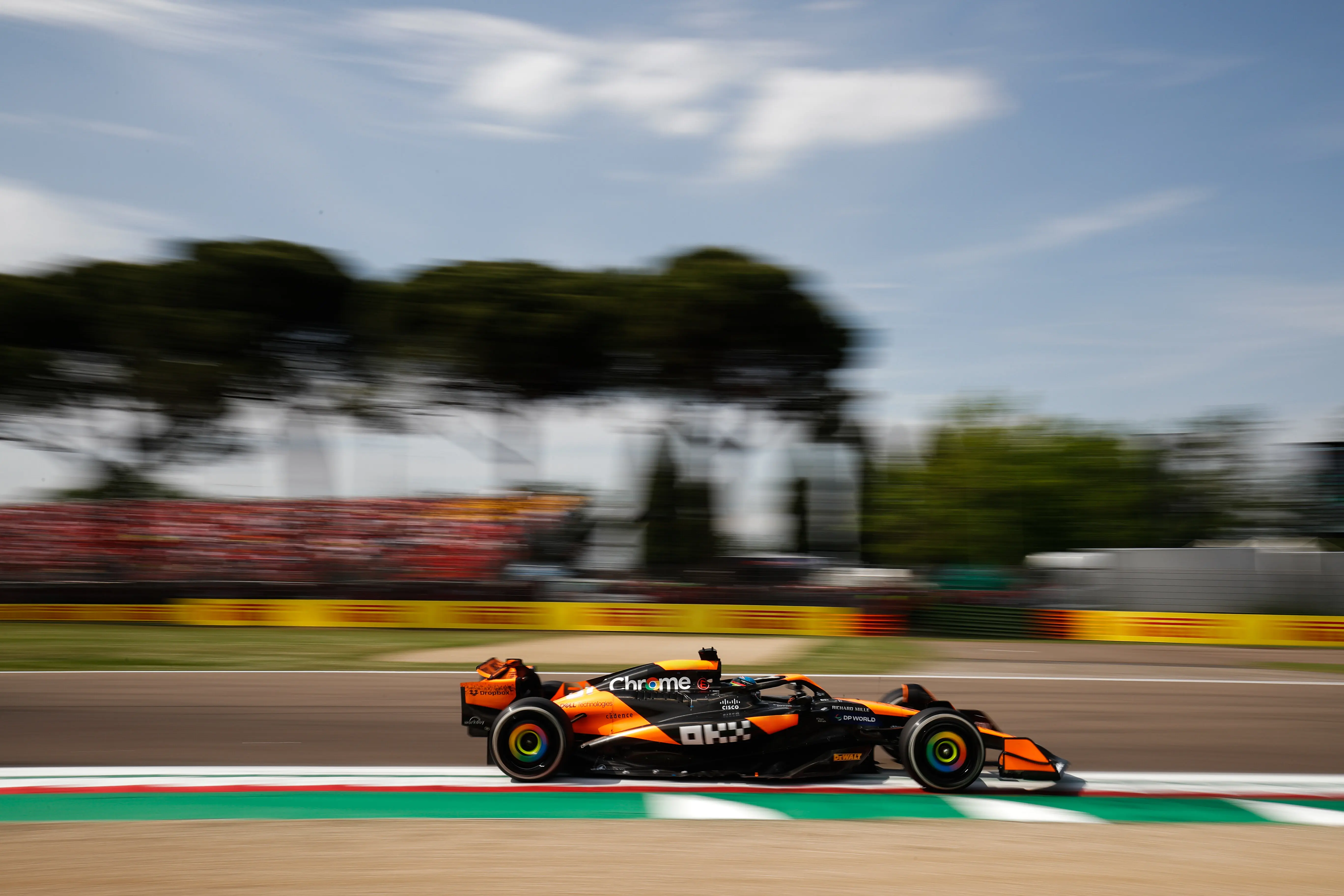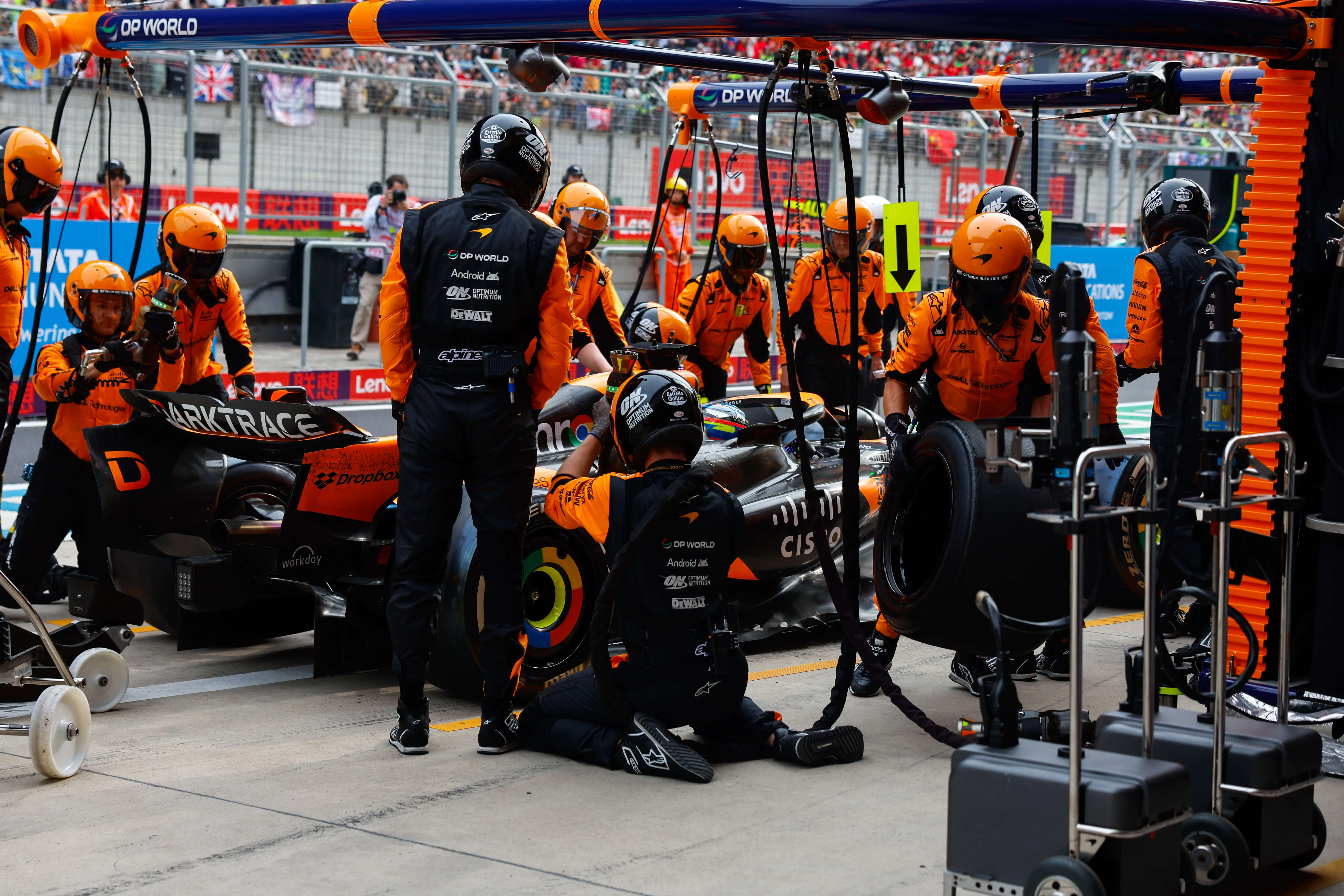
To reach the podium, speed, security, and relentless improvement are essential.
By the time McLaren Formula 1 Team drivers Lando Norris and Oscar Piastri pull their carbon-fiber MCL38 racecars into the pits for the last time on race day, the McLaren team has collected upward of 200 million data points. This immense volume reveals the critical importance of technology and information, so much so that securing and accessing these insights can shave tenths of seconds off lap times.
Ed Green, Head of Commercial Technology at McLaren Racing, manages all this information. Green tackles challenges like setting up mobile data centers at tracks worldwide and finding the right technologies to ensure the team can work securely and efficiently, no matter where they are. "The margins in our sport are so fine... You have to look at data to find that advantage," says Green.
Green is also responsible for helping forge partnerships to enhance McLaren's technological capabilities. Enter Dropbox, McLaren Racing's new Official Technology Partner. This multi-year partnership marks Dropbox’s first entry into Formula 1, helping McLaren collaborate efficiently, share files and content seamlessly, and manage vast amounts of data from across the globe—all in pursuit of results on the track.
We caught up with Green to hear how McLaren Racing relies on technology to stay ahead of the competition:

Which technologies have boosted your operational efficiency?
Computational fluid dynamics, which relies on high-performance computing, is a key technology for us. About 90% of our car's development happens in a digital format. If we get it right in the virtual world, we put it in a real wind tunnel, manufacture real parts, and put those parts on the car. We capture the sensing data, and the better we get that correlation, the better results we can drive on track.
We're now producing more content in-house, capturing as much content around the race as we collect telemetry and data on the cars. During a race weekend, we collect terabytes of data from the two racecars, and we're capturing almost 1.5 terabytes of content per race weekend through our videographers and social channels.
How has data analytics enhanced decision-making and performance on track at McLaren Racing?
The margins in our sport are so fine. In Australia, less than one second covered 10 positions in qualifying. You're talking about sub one or two percent of a lap time separating you from your competition. So, you have to look at data and rely on telemetry analytics to find that advantage. But you're only going to find those tenths of seconds by really searching through the data, looking at your telemetry, and understanding where you can improve. The human element is important, but a lot of this is based on data and science, not just gut feeling and racing instinct.

"You're only going to find those tenths of seconds by really searching through the data."
During races, how do you look at the security of your technology systems?
The systems, the car, and our people are the focus of our security. We focus on keeping our people and their devices secure, whether they're traveling, working from the hotel, or the lounge.
After going to the efforts of protecting the team in cyberspace we also need to protect in other ways. For example, capturing the back of the floor in the garage could give competitors insights. Even reviewing videos, which plays a big role as we move forward, we ensure cybersecurity isn't just about the cyber threat landscape but also about not giving away information in the content we're producing.
You've mentioned the amount of content being produced, which is of much higher quality than what we saw even five years ago. How does this impact the security of your intellectual property, especially with the risk of inadvertently capturing sensitive information?
Yeah, exactly. The resolution of cameras is increasing, and their cost is decreasing, making high-quality images and videos more accessible. People have been walking around the grid with long lenses for a long time, but now a small pocket camera can capture a lot.
This allows us to provide unique experiences and insights for our fans, like watching Lando celebrate with the team in high quality. But it also means that teams can gather information on each other as well.
How are you looking at AI, and how is it being implemented in your strategies and operations?
AI can make us more efficient as humans, support us in scaling the challenges we face, and solve really complicated problems. With 200 million data points, we can't get through all that as a race team. AI helps break down that data and provides additional insights, almost acting as an additional engineer or team member.
"AI helps break down that data...almost acting as an additional engineer or team member."
You've mentioned real-time data. Can you provide an example of a critical race decision that was influenced by this real-time data?
When a safety car incident happens on track, we have to make very high-pressure decisions about whether to change tires or stay out. You have to make numerous timing decisions, considering the speed of other cars, their changing pace, and more. People are central to this decision-making process, but they are supported by several simulations and AI tools that help predict where these events may end up.
When you're handling technology during races, what are you mostly concerned about? What are the challenges there, and how do you overcome them?
Some weird ones like heat and humidity. If you look at our data center, it's got wheels on it, which most data centers don't have. We also have concerns around cyber threats. Bandwidth is not always plentiful in some places. Sometimes you're in a city center with great connectivity, but other times you're in a green field that is calm for 360 days a year until the F1 circus rolls into town.

How do you personally view McLaren Racing's position in terms of technology compared to rival teams?
McLaren has always been ambitious in terms of technology. We focus on our own tech stack and push things forward ourselves. We stay true to our values and ensure we deliver real performance. It's important to find your strategy, focus, and stick to it. This ability to implement quickly is crucial. Ultimately, our goal is to drive efficiency and deliver performance for the team, always with the aim of winning World Championships. The culture at McLaren is about not only exploring new technologies but also delivering results.
What excites you most about the partnership with Dropbox?
Dash is definitely high on our list of things we're motivated by—considering the sheer number of documents and tools we use, seeing that integrated across the organization will be fantastic. And for video, integrating Replay fully will allow us to streamline timelines and see comments in context without having to switch between different tools. Whether it's from a file sharing, collaboration, AI, or video editing standpoint, the team is really excited to get hands-on with Dropbox.
This interview has been edited and condensed for clarity.

 Dropbox Dash: The AI teammate that understands your work
Dropbox Dash: The AI teammate that understands your work













.png/_jcr_content/renditions/hero_square%20(1).webp)

.png/_jcr_content/renditions/hero_wide%20(1).webp)



.png/_jcr_content/renditions/hero_square%20(3).webp)
.png/_jcr_content/renditions/blog%20(1).webp)

.png/_jcr_content/renditions/hero%20(1).webp)
.png/_jcr_content/renditions/hero_wide%20(1).webp)














































.png/_jcr_content/renditions/1080x1080%20(1).webp)










.gif)







































































.png)
.png)
.png)
.jpg)
.jpg)













































































































































































































































































































































































